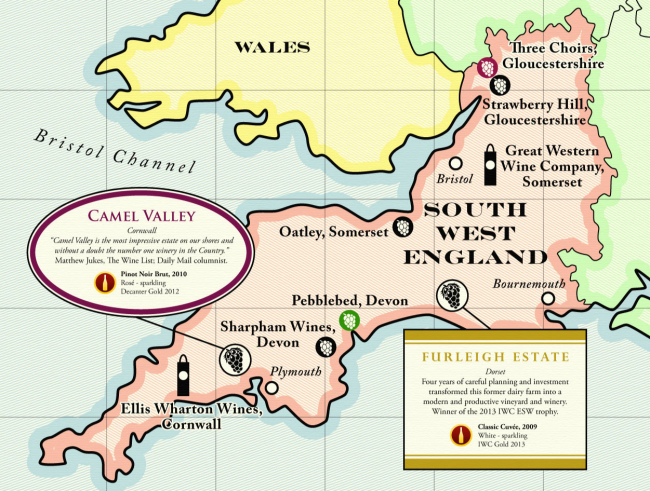I came across this wonderful infographic recently that conveys the essence of the English (and Welsh – and soon to be Scottish!) wine industry. While viticulture in England dates back to Roman times – with vineyards found as far north as York – it is still a tiny player on the world stage, with most production set for domestic consumption. Still small can be good – very good in the case of English Sparkling Wine, which can rival champagne – and there is no shortage of enthusiasm.
There are now 1,500 acres of vines planted in the UK – more than ever before. While most of these are concentrated in the south east of England, there are vineyards in Devon, Cornwall, Gloucestershire, Wales and (from 2014) even Scotland!
Here’s a sample of the infographic. For the full version, click this link.
Related articles
- In praise of … English sparkling wines | Editorial (theguardian.com)
- The Most Remarkable Microclimates in the UK (everest.co.uk)
- England’s best vineyards (wineappellation.co.uk)


A very good infographic – many thanks for sharing it.
May I draw your attention to a newcomer, Nyetimber’s neighbour Ambriel? My friends Charles and Wendy Outhwaite own a vineyard in Pulborough (South Downs, West Sussex).
In 2008 they planted their 9.5 hectares with 30,000 vines, Chardonnay, Pinot Noir and Pinot Meunier, which are meticulously tended by an Afghan vineyard manager. In their state-of-the-art winery the Outhwaites vinify only their own grapes, because their wine is meant to be an expression of their terroir. The wine-making is the ‘traditional method’ of Champagne, but as Wendy puts it, Ambriel is not ‘sham-pagne’.
The vineyard yielded its first crop in 2010, and these grapes (70% Chardonnay, 27% Pinot Noir and 3% Pinot Meunier) are the basis of the first Classic Cuvée, which was launched on 6 June 2013. The wine is delicious. Given that I took part in dosage trials in the spring, I have to declare an interest, but I can assure you that my slight involvement is not financial.
For further information, please see http://www.ambrielsparkling.com
Thank you Hanneke. As you know, I’m a big fan of English Sparkling. Nice to see there is another player in the market, and one that clearly has such attention to detail. I look forward to sampling their wine at some stage!
Hi James, love your blog and am totally envious of the wine culture at Oxford, it’s one of the key drawcards when I visit Oxford. Am currently struggling with building up the wine club here at Melbourne University.
But related to this post, what is the export market like for UK wines? What is the demand for local wines in the UK, is production meeting consumer demand, or otherwise? What is the level of awareness and perception of these wines at the average customer level?
Cheers.
On the whole, there doesn’t seem to be a strong demand for English wines on the export market. Compared to other parts of the world, they are expensive to produce and not exactly getting ‘brand recognition’ – yet anyway. This is a major issue especially for English sparkling producers, which can produce world-beating champagne-style wines. Yet, the top wines are no cheaper than champagne and the general consumer market – apart from the wine geeks – are incredulous with the idea of English wine. However, this may change in the future…